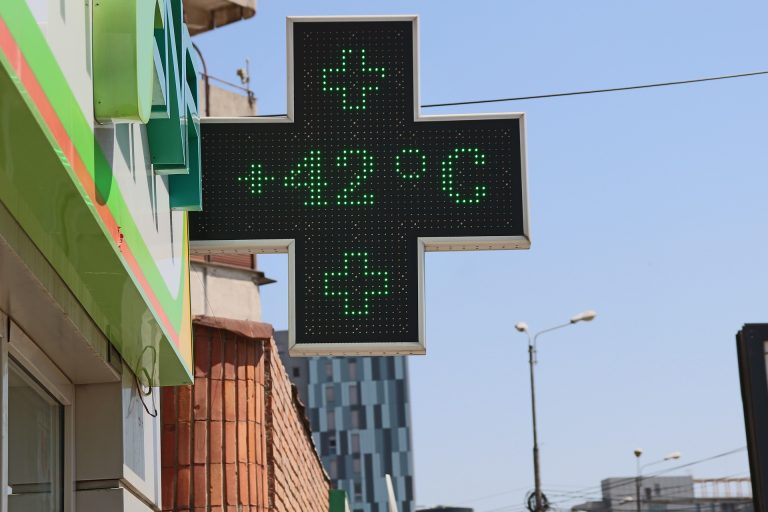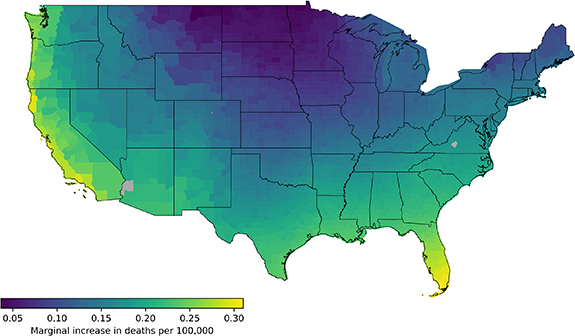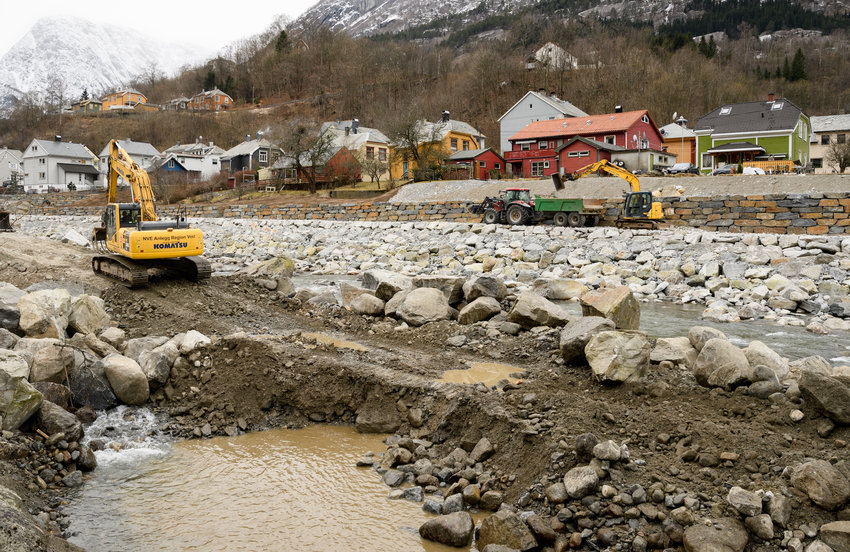In many parts of the world, the climate is not only becoming hotter, but also more volatile. People can adapt to both extreme cold and extreme heat, but it is far more difficult to adapt to a climate that is becoming less predictable. Research data from the US confirms that large temperature variations lead to increased mortality.

While many research projects have explored the social and economic effects of rising average temperatures, fewer have studied the effects of temperature variation. Isabel Hovdahl works as a climate economist and has researched the historical impact of day-to-day temperature variations on mortality in the US over a 35-year period.
Frequent temperature variation makes it difficult to know what tomorrow’s weather will be like. Hovdahl uses the temperature variance as a measure of unpredictability:

- The climate is becoming more and more extreme, and this affects the mortality rate in a negative direction. Humans can adapt to fairly extreme temperatures, but struggle with large variations. An increase of +1 degree in daily temperature variation caused an additional 0.206 deaths per 100,000 during the period 1970-2004, explains Hovdahl, who has a Post.Doc. position at the NHH Norwegian School of Economics.
The research project is part of the Climate Futures collaboration, and the results have been published in Environmental Research Letters. The paper examines data from the US, but the effect can probably be applied in a global perspective, even if the variation will not change equally everywhere. In the Northern Hemisphere, temperatures are more stable, while in the Southern Hemisphere, temperatures are more unstable.
The example from the US shows that although two states may have comparable average temperatures, they may experience very different temperature variations from day to day (figure 1). This study examined the effect on mortality of variations within the seasons. These variations appear as deviations from the seasonal average values.

- Increased variation in daily temperatures will lead to more days of extreme heat, while at the same time it will be more difficult to predict temperatures in the future. Both of these effects can lead to increased mortality. Climate change will thus have a greater impact on mortality if it also results in an increase in temperature variance, explains Hovdahl.

Previous research has shown that people adapt to the climate that we live in. The effect of extreme temperatures is lower the more often such episodes are experienced during the year. This also applies to temperature variation. The more one is used to large variations in temperature during the year, the less effect temperature variation has on mortality. For example, people in Chicago are used to both very cold winters and very hot summers, and here we find little effect of temperature variation on mortality. Whereas in San Diego on the west coast, people are used to stable temperatures throughout the year, and in this area we find a very deadly effect of increased temperature variation.

Researchers have questioned whether the increase in living standards and access to air conditioning (AC) can reduce the negative effect. Hovdahl has not found that this applies to large temperature variations:
Previous studies have found that increased access to AC can reduce the deadly effect of global warming. However, I find that this only applies to an increase in extreme heat, but not to an increase in temperature variation. Access to AC thus protects to a small extent against increased temperature uncertainty.
Declining mean daily temperature variation in the United States since 1970 may also have resulted in 1,400 and 1,600 premature deaths being avoided each winter and summer, respectively. Hovdahl nevertheless states that this will not be the case in all countries, and especially not in countries in the southern hemisphere that not only have to adapt to more extreme heat, but also more unstable temperatures. In comparison, the increase in the number of days with a mean temperature above 35 ∘C may have caused an additional 655 premature deaths each year.
Årsaken til at jeg har valgt å studere tallmateriale fra USA er at det er vanskelig å få tilgang til gode nok dødelighetsdata over en lang periode. USA er et stort land med ulike klimasoner, som gjør det interessant å forske på, avslutter Hovdahl.
Paper in Environmental Research Letters
Isabel Hovdahl 2022 The deadly effect of day-to-day temperature variation in the United States, Environ. Res. Lett. 17 104031. DOI 10.1088/1748-9326/ac9297

